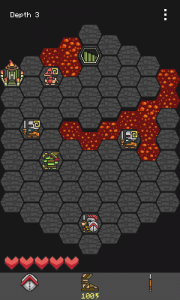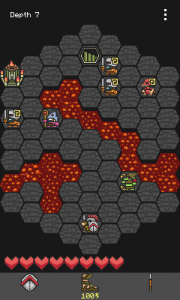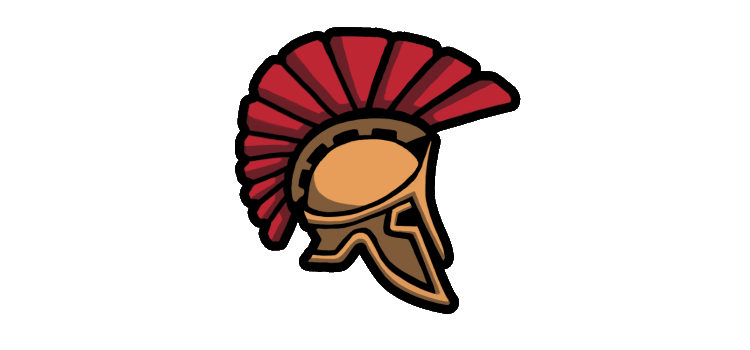 As any fule kno, Greek hoplites are hard as nails. Take, for example, the terrifying power fantasies of Frank Miller and Zack Snyder. In The 300 we see a small band of hoplites massacring, with the sort of ease only facilitated by slow motion and protagonist superpowers, tens of thousands of Persians, elephants and guys with big crab claws. And this despite being thoroughly oiled up at the time, which must have made grasping bronze weapons rather tricky.
As any fule kno, Greek hoplites are hard as nails. Take, for example, the terrifying power fantasies of Frank Miller and Zack Snyder. In The 300 we see a small band of hoplites massacring, with the sort of ease only facilitated by slow motion and protagonist superpowers, tens of thousands of Persians, elephants and guys with big crab claws. And this despite being thoroughly oiled up at the time, which must have made grasping bronze weapons rather tricky.
This is a roundabout way of coming to the point, the foremost spear-point emerging from this games criticism phalanx, that hoplites are as famous as they are because they fought in formation. A Greek phalanx was the dominant tactical approach to combat in Europe for many hundreds of years, ultimately only fading from history when the more flexible formations of the Roman legion rose – perhaps six centuries after the first recorded phalanx.
What this tells us is something pretty fundamental to both ancient and modern warfare, something that hilarious but moronic fodder like Deadliest Warrior misses: that the Greek hoplite was a fine warrior in formation. Alone, a fully-armoured hoplite would probably be bested by a more manoeuvrable foe, unless able to land a shot with his sarissa, the really rather enormous spear favoured by classical hoplite phalanxes.
And this is a really, really roundabout way of getting to Hoplite, the tactical/puzzle roguelike currently stirring up rather a lot of fuss in the world of mobile gaming. Because in Hoplite you take charge of a lone hoplite as he hops light-footedly through the layers of the underworld in search of the Fleece of Yendor.
Can you believe this? Folks, this videogame bears absolutely no relation to historical reality. Not only was the underworld primarily a folkloric metaphor, there’s not even such a thing as the Fleece of Yendor, and if a hoplite were to go looking for such a macguffin he would almost certainly bring his bros along!
 It is almost as though dev Doug Cowley, aka. Magma Fortress, credits his player base with no historical awareness at all, just a surfeit of wild imagination and a love of turn-based play and tactical planning… oh. I see where I’ve been going wrong.
It is almost as though dev Doug Cowley, aka. Magma Fortress, credits his player base with no historical awareness at all, just a surfeit of wild imagination and a love of turn-based play and tactical planning… oh. I see where I’ve been going wrong.
Videogames.
The historical authenticity of Doug Cowley’s may be up the Styx without a paddle, but in terms of play its got some mean shakes to it. That Fleece of Yendor may not have been recounted in the Homeric tales, but it does reference Rogue – the father of roguelike games, obviously – as well as Nethack. Cards on the table, there. Don’t be taken in, though, as Hoplite is emphatically not a game in the typical roguelike mould.
Hoplite eschews the ASCII art of its noble forebears but remains an unadorned affair, making use of lo-fi pixel art, a simple looping soundtrack and basic sound effects, all of which serve their purpose well enough. So far, so roguelike.
Where Hoplite diverges is in how it encourages players to consider their moves carefully. Whilst Rogue, Nethack, Angband and their kin encourage careful play, they are ultimately based around RPG systems and statistics. The player’s avatar strikes with its weapon, dealing damage within a defined range to an enemy – but within that range there is variance. Herein lies the random element which has brought about the downfall of many a hero, be they gnomic war gnome or vampire motorcycle.
In Cowley’s game, the damage dealt by the eponymous warrior and his foes is a known quantity: players can calculate in advance the outcome of every move. Play therefore becomes not a gamble but a game of chess: of anticipating enemy moves, calculating your approach and striking when the time is right.
Let me expand on this:Â Hoplite is a turn-based affair laid out on a hexagonal grid, like the PC strategy games of yore. Each turn the player may move their hoplite or choose a special ability to use. As the player takes a turn, so does every enemy onscreen. Enemies only have one hitpoint each, and their attack capabilities are limited to set patterns. It’s easy enough, following the short tutorial, to work out how to approach enemies and cut them down.
Archers, for example, can fire at long range but only in six defined rows, so a zig-zag approach to them closes the distance nicely. As archers can’t fire at close range it’s thus trivially easy to finish them off. Warriors can only attack at close range, and to defeat them the player need only be adjacent to them and move to another adjacent square. The chief risk is in leaving your hoplite surrounded by two or more enemy warriors, at least one of whom will be able to attack you before you can finish them all off.
The player’s abilities are souped up with a few special abilities – leap, shield bash and spear throw – each of which can be upgraded at altars to the gods, expanding the effectiveness of your tactical portfolio. Stunning enemies with a leap, for example, proves effective for crowd control, whilst a longer range spear throw can help you pick off more dangerous enemies. These abilities aren’t limitless, however: a thrown spear must be retrieved, leaping uses up energy that is limited within each level, and the shield bash operates on a cooldown.
 On the first few levels only a couple of basic enemies will appear, and working out how to get close enough to them is a simple affair. Play soon hots up with levels crowded with numerous enemies featuring different attack types, and finishing them off becomes a calculated risk. If I move toward this bomb-thrower and then shield-bash his attack back at him, I should be able to take him out alongside at least one other enemy. But that will put me at risk of that archer, who will get in at least one free attack. Still, if I go for the archer first, closing the distance will take more turns and I run the risk of being surrounded. Better to take the hit from the archer, perhaps, and trust that I can regain health at the next alter I find.Â
On the first few levels only a couple of basic enemies will appear, and working out how to get close enough to them is a simple affair. Play soon hots up with levels crowded with numerous enemies featuring different attack types, and finishing them off becomes a calculated risk. If I move toward this bomb-thrower and then shield-bash his attack back at him, I should be able to take him out alongside at least one other enemy. But that will put me at risk of that archer, who will get in at least one free attack. Still, if I go for the archer first, closing the distance will take more turns and I run the risk of being surrounded. Better to take the hit from the archer, perhaps, and trust that I can regain health at the next alter I find.Â
The deeper your hoplite travels, the stronger he will become and the more numerous and dangerous the enemies are that he will face. As as traditional with roguelikes, death seems all but inevitable, but in Hoplite failure cannot be blamed on chance: only your own poor planning, or simply overwhelming odds.
[Hoplite is available for iOS and Android. Arcadian Rhythms continues to not rate games, trusting that our words are enough to convey our opinions, but in 2014 are prepared to offer helpful scores to those who like them. In line with this new editorial stance we rate Hoplite seven Spartans out of an Athenian city-state.]
